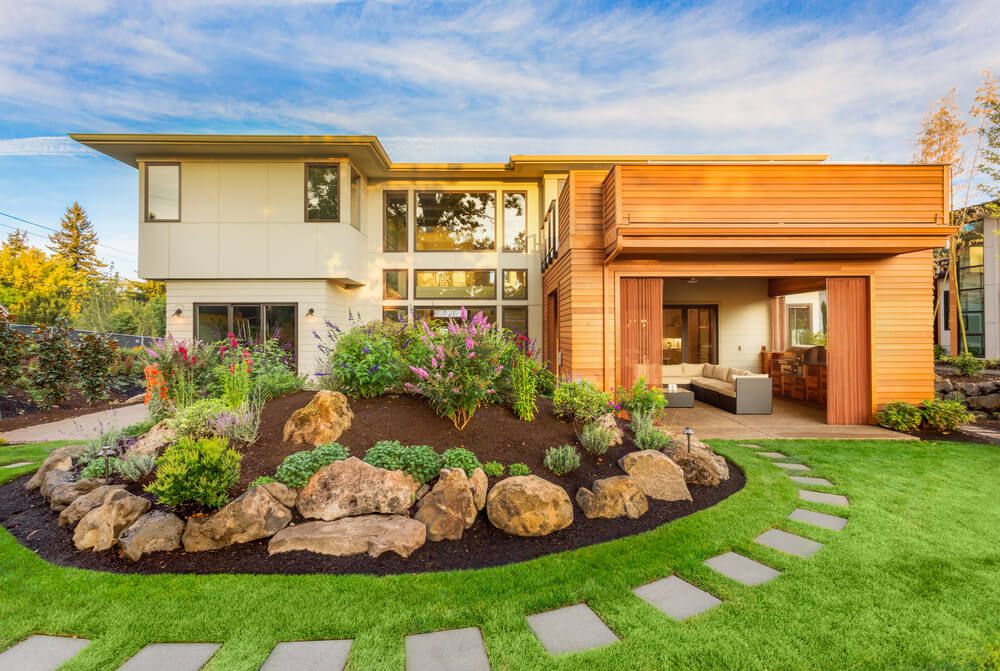In the ever-evolving world of garden landscaping, new trends continually emerge, blending innovation, sustainability, and aesthetics. As we move further into this year, several trends stand out, promising to transform gardens into serene, functional, and eco-friendly spaces. Below, we explore the top seven garden landscaping trends that are making waves this year.
1. Sustainable and Eco-Friendly Landscaping
With growing environmental consciousness, sustainable landscaping practices are at the forefront. Gardeners are increasingly prioritizing native plants, drought-resistant species, and organic gardening methods. This trend not only reduces water consumption and chemical use but also supports local wildlife and promotes biodiversity.
Native Plants
Native plants are adapted to local climate conditions, requiring less water and maintenance. They provide habitat for local wildlife, including pollinators like bees and butterflies, which are crucial for a healthy ecosystem.
Rain Gardens
Rain gardens are designed to capture and filter rainwater runoff, reducing the strain on stormwater systems. These gardens are often filled with water-tolerant plants that can thrive in wet conditions, further enhancing the garden's resilience.
2. Edible Landscaping
Combining beauty and functionality, edible landscaping integrates food-producing plants into traditional garden designs. This trend is perfect for those who want to grow their own fresh produce while maintaining an aesthetically pleasing landscape.
Herb Gardens
Herb gardens are a popular choice, featuring plants like basil, rosemary, and mint. These gardens can be planted in dedicated beds or incorporated into flower borders, providing culinary benefits and aromatic beauty.
Fruit Trees and Bushes
Incorporating fruit trees and bushes into garden designs is another trend gaining traction. Apple, pear, and cherry trees, along with berry bushes like blueberries and raspberries, not only offer delicious harvests but also enhance the garden's visual appeal.
3. Low-Maintenance Gardens
In our busy lives, low-maintenance gardens are becoming increasingly popular. These gardens are designed to be easy to care for, requiring minimal effort to maintain their beauty and functionality.
Perennials Over Annuals
Perennials, which return year after year, are favored over annuals that need replanting each season. This reduces the time and effort required for planting while ensuring a consistent display of foliage and flowers.
Automated Irrigation Systems
Automated irrigation systems, including drip irrigation and smart sprinklers, help maintain optimal moisture levels with minimal manual intervention. These systems can be programmed to water plants at specific times, conserving water and ensuring plants receive the necessary hydration.
4. Outdoor Living Spaces
Gardens are increasingly being viewed as extensions of the home, with outdoor living spaces becoming a central feature. These spaces are designed for relaxation, entertainment, and enjoying nature.
Patios and Decks
Patios and decks provide a comfortable area for outdoor seating and dining. Materials like natural stone, wood, and composite decking are popular choices, offering durability and aesthetic appeal.
Outdoor Kitchens and Fire Pits
Outdoor kitchens and fire pits transform gardens into versatile entertainment areas. Equipped with grills, countertops, and seating, these spaces are perfect for hosting gatherings and enjoying alfresco dining.
5. Vertical Gardening
With urbanization and smaller garden spaces, vertical gardening is a trend that maximizes the use of available space. This approach involves growing plants upwards using structures like trellises, walls, and containers.
Living Walls
Living walls, or green walls, are vertical structures covered in vegetation. They not only add a striking visual element but also improve air quality and provide insulation.
Hanging Gardens
Hanging gardens use suspended containers to grow plants, making use of vertical space and adding a dynamic element to garden design. These gardens are ideal for balconies, patios, and small yards.
6. Water Features
Water features bring a sense of tranquility and aesthetic beauty to gardens. From small fountains to elaborate ponds, these features are increasingly being incorporated into modern garden designs.
Natural Ponds
Natural ponds create a habitat for aquatic plants and wildlife, contributing to a balanced ecosystem. They can be designed to blend seamlessly with the landscape, offering a serene focal point.
Fountains and Waterfalls
Fountains and waterfalls add movement and sound to the garden, enhancing the sensory experience. These features can be customized to fit gardens of all sizes, from small patio fountains to large cascading waterfalls.
7. Wildlife-Friendly Gardens
Creating a habitat for local wildlife is a growing trend in garden landscaping. These gardens are designed to attract and support various species, promoting biodiversity and environmental health.
Pollinator Gardens
Pollinator gardens are planted with flowers that attract bees, butterflies, and other pollinators. Plants like lavender, echinacea, and sunflowers provide nectar and pollen, supporting these essential creatures.
Bird-Friendly Features
Bird-friendly gardens include elements like bird feeders, nesting boxes, and bird baths. Native plants that produce berries and seeds also help attract and sustain bird populations.
Conclusion
Embracing these top garden landscaping trends can transform your outdoor space into a stunning, sustainable, and functional haven. Whether you're looking to create a low-maintenance retreat, grow your own food, or support local wildlife, these trends offer a wealth of inspiration for any gardener. By integrating these innovative ideas, you can enjoy a beautiful and eco-friendly garden that reflects the latest in landscaping design.





Comments